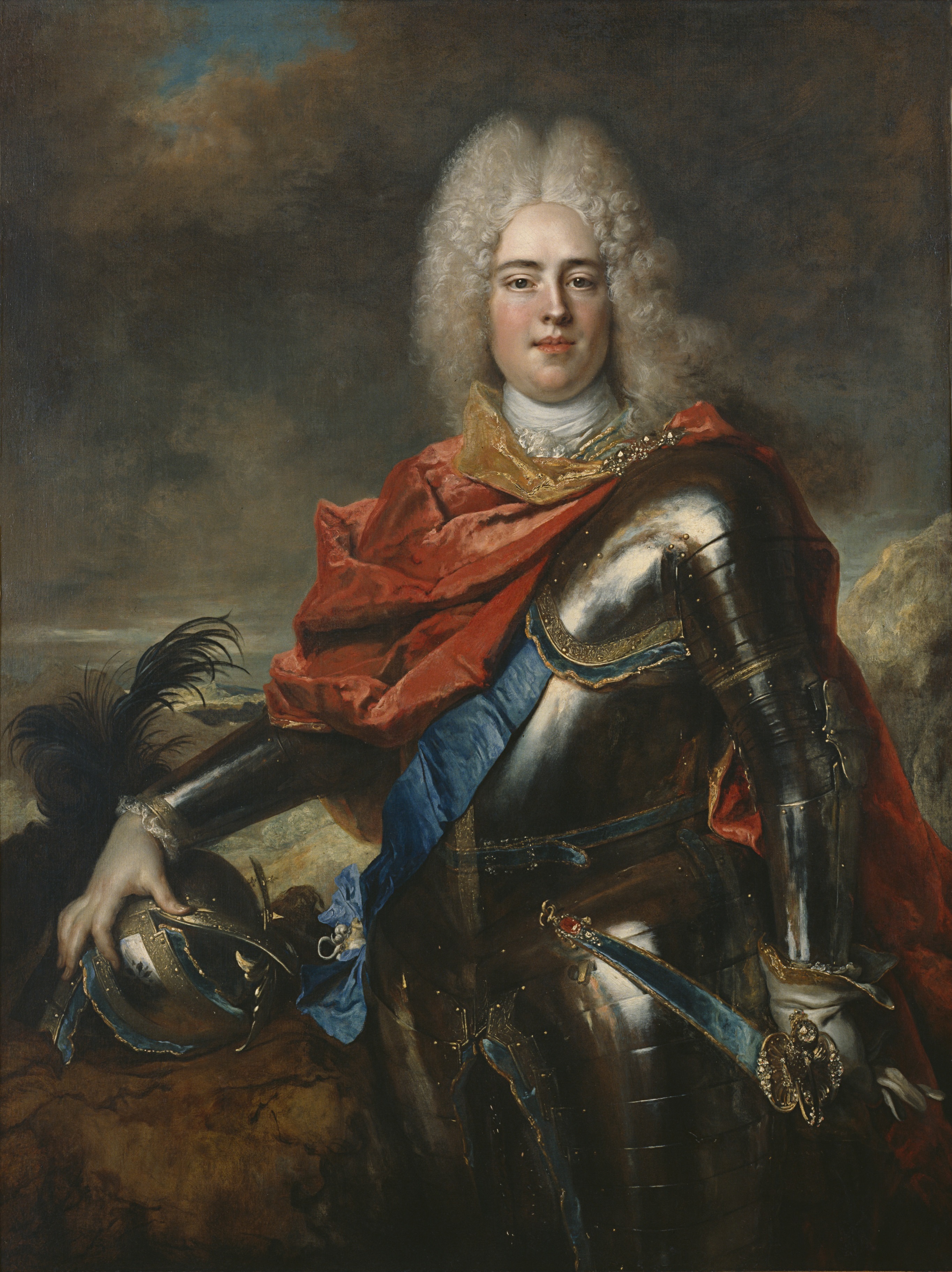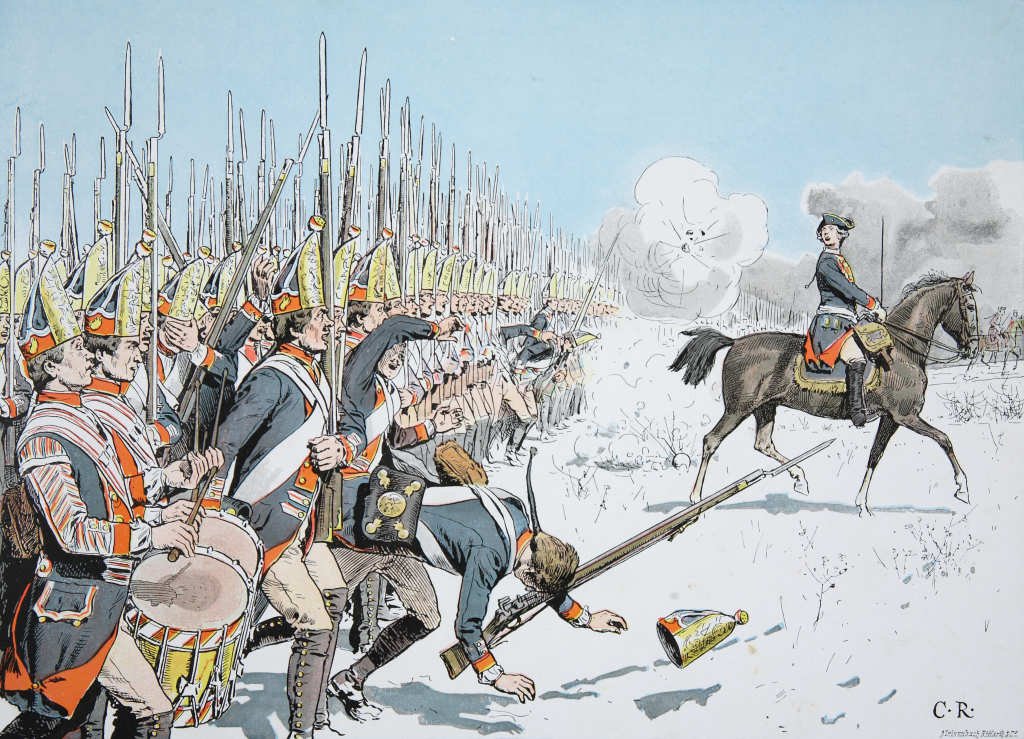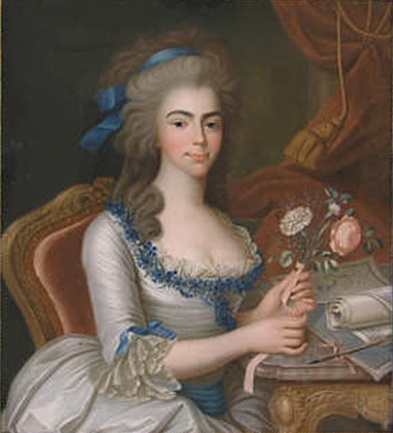|
Maria Amalia Of Saxony (1757–1831)
Maria Amalia of Saxony (26 September 1757 – 20 April 1831) was a Duchess consort of Zweibrücken by her 1774 marriage to Charles II August, Duke of Zweibrücken. Life Maria Amalia was one of nine children born to Frederick Christian, Elector of Saxony and Maria Antonia Walpurgis of Bavaria in Dresden. As her parents were first cousins, Maria Amalia was also a double great granddaughter of Joseph I, Holy Roman Emperor through her two grandmothers: Maria Josepha of Austria and Maria Amalia, Holy Roman Empress, who were sisters. Duchess of Zweibrücken In Dresden 1774, Maria Amalia married Charles of Zweibrücken-Birkenfeld. Previously, he had been bitterly rejected in 1768 as a husband for Maria Amalia of Austria by her mother Maria Theresa of Austria, who felt he was not suitable enough for her. Maria Amalia was thus Charles' second choice. His sister had already been married to Maria Amalia's brother Frederick since 1769. Charles succeeded as Duke of Zweibrücken in 177 ... [...More Info...] [...Related Items...] OR: [Wikipedia] [Google] [Baidu] |
Palatine Zweibrücken
The Duchy of Palatinate-Zweibrücken (; ) was a duchy of the Holy Roman Empire with full voting rights to the Reichstag. Its capital was Zweibrücken. The reigning house, a branch of the Wittelsbach dynasty, was also the Royal House of Sweden from 1654 to 1720. Overview Palatine Zweibrücken was established as a separate principality in 1459, when Stephen, Count Palatine of Simmern-Zweibrücken divided his territory, Palatinate-Simmern and Zweibrücken, between his two sons. The younger son, Louis I, received the County of Zweibrücken and the County of Veldenz. Palatine Zweibrücken ceased to exist in 1797 when it was annexed by France. After the Congress of Vienna in 1815, some parts of it were returned to the last Duke, King Maximilian I Joseph of Bavaria, who joined them with other former territories on the left bank of the Rhine to form the , later the Rhenish Palatinate. Origins The County Palatine of Simmern-Zweibrücken had been created in 1410 for Stephen, the ... [...More Info...] [...Related Items...] OR: [Wikipedia] [Google] [Baidu] |
Augustus III Of Poland
Augustus III (; – "the Saxon"; ; 17 October 1696 5 October 1763) was List of Polish monarchs, King of Poland and Grand Duchy of Lithuania, Grand Duke of Lithuania from 1733 until 1763, as well as List of rulers of Saxony, Elector of Saxony in the Holy Roman Empire where he was known as Frederick Augustus II (). He was the only legitimate son of Augustus II the Strong, and converted to Catholicism in 1712 to secure his candidacy for the Polish throne. In 1719 he married Maria Josepha, daughter of Joseph I, Holy Roman Emperor, and became elector of Electorate of Saxony, Saxony following his father's death in 1733. Augustus was able to gain the support of Charles VI, Holy Roman Emperor, Charles VI by agreeing to the Pragmatic Sanction of 1713 and also gained recognition from Russian Empress Anna of Russia, Anna by supporting Russia's claim to the region of Courland. He was elected king of Poland by a small minority on 5 October 1733 and subsequently banished the former Polish ki ... [...More Info...] [...Related Items...] OR: [Wikipedia] [Google] [Baidu] |
Duchesses In Germany
Duke is a male title either of a monarch ruling over a duchy, or of a member of royalty, or nobility. As rulers, dukes are ranked below emperors, kings, grand princes, grand dukes, and above sovereign princes. As royalty or nobility, they are ranked below grand dukes and above or below princes, depending on the country or specific title. The title comes from French ''duc'', itself from the Latin ''dux'', 'leader', a term used in republican Rome to refer to a military commander without an official rank (particularly one of Germanic or Celtic origin), and later coming to mean the leading military commander of a province. In most countries, the word ''duchess'' is the female equivalent. Following the reforms of the emperor Diocletian (which separated the civilian and military administrations of the Roman provinces), a ''dux'' became the military commander in each province. The title ''dux'', Hellenised to ''doux'', survived in the Eastern Roman Empire where it continued in seve ... [...More Info...] [...Related Items...] OR: [Wikipedia] [Google] [Baidu] |
Nobility From Dresden
Nobility is a social class found in many societies that have an aristocracy. It is normally appointed by and ranked immediately below royalty. Nobility has often been an estate of the realm with many exclusive functions and characteristics. The characteristics associated with nobility may constitute substantial advantages over or relative to non-nobles or simply formal functions (e.g., precedence), and vary by country and by era. Membership in the nobility, including rights and responsibilities, is typically hereditary and patrilineal. Membership in the nobility has historically been granted by a monarch or government, and acquisition of sufficient power, wealth, ownerships, or royal favour has occasionally enabled commoners to ascend into the nobility. There are often a variety of ranks within the noble class. Legal recognition of nobility has been much more common in monarchies, but nobility also existed in such regimes as the Dutch Republic (1581–1795), the Republic o ... [...More Info...] [...Related Items...] OR: [Wikipedia] [Google] [Baidu] |
1831 Deaths
Events January–March * January 1 – William Lloyd Garrison begins publishing '' The Liberator'', an anti-slavery newspaper, in Boston, Massachusetts. * January 10 – Japanese department store, Takashimaya in Kyoto established. * February–March – Revolts in Modena, Parma and the Papal States are put down by Austrian troops. * February 2 – Pope Gregory XVI succeeds Pope Pius VIII, as the 254th pope. * February 5 – Dutch naval lieutenant Jan van Speyk blows up his own gunboat in Antwerp rather than strike his colours on the demand of supporters of the Belgian Revolution. * February 7 – The Belgian Constitution of 1831 is approved by the National Congress. *February 8 – French-born botanical explorer Aimé Bonpland leaves Paraguay for Argentina. * February 14 – Battle of Debre Abbay: Ras Marye of Yejju marches into Tigray, and defeats and kills the warlord Sabagadis. * February 25 – Battle of Olszynka ... [...More Info...] [...Related Items...] OR: [Wikipedia] [Google] [Baidu] |
1757 Births
Events January–March * January 2 – Seven Years' War: The British East India Company Army, under the command of Robert Clive, captures Calcutta, India. * January 5 – Robert-François Damiens makes an unsuccessful assassination attempt on Louis XV of France, who is slightly wounded by the knife attack. Damiens is executed on March 28.Herbert J. Redman, ''Frederick the Great and the Seven Years' War, 1756–1763'' (McFarland, 2015) p33 * January 12 – Koca Ragıp Pasha becomes the new Grand Vizier of the Ottoman Empire, and administers the office for seven years until his death in 1763. * January 17 – Ahmad Shah Durrani leads his Afghan forces to sack Delhi during his invasions of India. * February 1 – King Louis XV of France dismisses his two most influential advisers. His Secretary of State for War, the Comte d'Argenson and the Secretary of the Navy, Jean-Baptiste de Machault d'Arnouville, are both removed from office at the urg ... [...More Info...] [...Related Items...] OR: [Wikipedia] [Google] [Baidu] |
Princess Augusta Wilhelmine Of Hesse-Darmstadt
Princess Augusta Wilhelmina of Hesse-Darmstadt (; 14 April 1765 – 30 March 1796) was Palatine Zweibrücken, Duchess consort of Zweibrücken by marriage to Maximilian I Joseph of Bavaria, Maximilian, Duke of Zweibrücken and the mother of King Ludwig I of Bavaria. Biography Augusta Wilhelmina was born in Darmstadt, the fourth daughter and ninth child of Prince George William of Hesse-Darmstadt (second son of Louis VIII, Landgrave of Hesse-Darmstadt) and Countess Maria Louise Albertine of Leiningen-Falkenburg-Dagsburg. Marriage On 30 September 1785, in Darmstadt, Augusta Wilhelmina married Maximilian I Joseph of Bavaria, Maximilian, Count Palatine of Zweibrücken (later King Maximilian I Joseph of Bavaria). Maximilian was an officer in the French army stationed at Strasbourg, but the couple also often visited Paris. There, Augusta Wilhelmina met Queen Marie Antoinette, with whom she maintained an ongoing correspondence. In 1789, Maximilian's regiment rose in French Revolution ... [...More Info...] [...Related Items...] OR: [Wikipedia] [Google] [Baidu] |
Caroline Of Nassau-Saarbrücken
Caroline may refer to: People * Caroline (singer) (born 1981), Japanese glitch pop musician * Caroline (given name), a feminine given name * J. C. Caroline (1933–2017), American football player * Jamie Caroline (born 1999), British racing driver * Jordan Caroline (born 1996), American basketball player * Nancy Caroline (1944–2002), American-Israeli physician Places Antarctica * Caroline Bluff, a headland in the South Shetland Islands Australia * Caroline, South Australia, a locality in the District Council of Grant * Hundred of Caroline, a cadastral sub-unit of the County of Grey in South Australia * Caroline Springs, Victoria a town in Victoria Canada * Caroline, Alberta, a village Kiribati * Caroline Island, an uninhabited coral atoll in the central Pacific Micronesia *Caroline Islands an archipelago in the western Pacific, northeast of New Guinea * Caroline Plate, a small tectonic plate north of New Guinea United States * Caroline, New York, a town * Caroline, Ohio, an ... [...More Info...] [...Related Items...] OR: [Wikipedia] [Google] [Baidu] |
Therese Kunigunde Of Bavaria
Theresa Kunegunda (, , ) (4 March 1676 – 27 March 1730) was a Polish princess, Electress of Bavaria and of the Electorate of the Palatinate. By birth, she was a member of the House of Sobieski and by marriage, she is also a member of the House of Wittelsbach. She served as Regent of the Palatinate in 1704–05. Biography Born on 4 March 1676, she was the daughter of the King of Poland and Grand Duke of Lithuania John III Sobieski and Marie Casimire Louise de La Grange d'Arquien. While her parents had 13 children, she was the only daughter to survive childhood. Theresa was baptized in Jaworow on 19 July, having for her godfather Charles II, king of England and for her godmother Marie-Thérèse of Austria, wife of Louis XIV, both by proxy. Theresa was educated in painting and music, Latin, Italian and French. At the beginning of 1692, her father planned to marry her to the Crown Prince of Denmark, but this project was subsequently abandoned. Wedding On 15 August 1694, at th ... [...More Info...] [...Related Items...] OR: [Wikipedia] [Google] [Baidu] |
Maximilian II Emanuel, Elector Of Bavaria
Maximilian II (11 July 1662 – 26 February 1726), also known as Max Emanuel or Maximilian Emanuel, was a Wittelsbach ruler of Electorate of Bavaria, Bavaria and a prince-elector of the Holy Roman Empire. He was also the last governor of the Spanish Netherlands and Duke of Luxembourg. An able soldier, his ambition led to conflicts that limited his ultimate dynastic achievements. He was born in Munich to Ferdinand Maria, Elector of Bavaria and Princess Henriette Adelaide of Savoy. War against the Ottoman Empire Maximilian inherited the elector's mantle while still a minor in 1679 and remained under his uncle Maximilian Philipp Hieronymus, Prince of Bavaria, Maximilian Philipp's regency until 1680. By 1683 he was already embarked on a military career, fighting in the defence of Vienna against the attempt of the Ottoman Empire to extend their possessions further into Europe. He returned to court for long enough to marry Maria Antonia of Austria (1669-1692), Maria Antonia, daughter of ... [...More Info...] [...Related Items...] OR: [Wikipedia] [Google] [Baidu] |
Wilhelmina Amalia Of Brunswick
Wilhelmine Amalie of Brunswick-Lüneburg (21 April 1673 – 10 April 1742) was Holy Roman Empress, Queen of the Germans, Queen of Hungary, Queen of Bohemia, Archduchess consort of Austria etc. as the spouse of Joseph I, Holy Roman Emperor. Early life Wilhelmine Amalie was the youngest daughter of John Frederick, Duke of Brunswick-Calenberg, and Princess Benedicta Henrietta of the Palatinate. Her two surviving sisters were Charlotte Felicitas, who married Rinaldo d'Este, Duke of Modena, and Henriette Marie, who died young. An older sister, Anna Sophie, died in childhood. After the death of her father in 1679, her mother returned to France, taking her three daughters with her. In France, Wilhelmine was given a Catholic education by her great-aunt Louise Hollandine at the convent of Maubuisson, and did not return to Hanover until she was 20 years old, in 1693. Early on, the Holy Roman Empress Eleonore Magdalene of Neuburg decided that Wilhelmine Amalie would be her daughte ... [...More Info...] [...Related Items...] OR: [Wikipedia] [Google] [Baidu] |
Christiane Eberhardine Of Brandenburg-Bayreuth
Christiane Eberhardine of Brandenburg-Bayreuth (19 December 1671 – 4 September 1727) was Electress of Saxony from 1694 to 1727 (her death), Queen Consort and Grand Duchess Consort of the Polish–Lithuanian Commonwealth from 1697 to 1727 by marriage to Augustus II the Strong. Not once throughout the whole of her thirty-year queenship did she set foot in Poland-Lithuania, instead living in Saxony in self-imposed exile. Born a German margravine, she was called ''Sachsens Betsäule'', "Saxony's pillar of prayer", by her Protestant subjects for her refusal to convert to Catholicism. Despite the allegiance of Christiane Eberhardine and her mother-in-law, Anna Sophie of Denmark, to Lutheranism, her husband and son, later Augustus III, both became Catholics, ensuring Catholic succession in the Albertine lands after a century and a half. Biography Early life She was the firstborn child of Christian Ernst, Margrave of Brandenburg-Bayreuth, and his second wife, Princess Sophie L ... [...More Info...] [...Related Items...] OR: [Wikipedia] [Google] [Baidu] |







